

Vol. 41 (Issue 15) Year 2020. Page 27
ILYUSHIN, Yury V. 1 & GOLOVINA, Ekaterina I. 2
Received: 22/01/2019 • Approved: 13/04/2020 • Published 30/04/2020
ABSTRACT: Currently, the share of high-paraffin crude oil with high pour points in the balance of hydrocarbon production has significantly increased. In this regard, problems arise in their extraction, preparation, transport and processing, due to a significant increase in viscosity, as well as slump loss at low ambient temperatures. The nature of their course acquires a non-Newtonian character. At the same time, one of the problems that become extremely acute is production and transportation of such hydrocarbon systems. Deep mathematical analysis in this field was made. |
RESUMEN: Actualmente, la proporción de petróleo crudo alto en parafina con altos puntos de fluidez en el balance de la producción de hidrocarburos ha aumentado significativamente. A este respecto, surgen problemas en su extracción, preparación, transporte y procesamiento, debido a un aumento significativo en la viscosidad, así como a la pérdida de asentamiento a bajas temperaturas ambientales. La naturaleza de su curso adquiere un carácter no newtoniano. Al mismo tiempo, uno de los problemas que se vuelve extremadamente agudo es la producción y el transporte de tales sistemas de hidrocarburos. Se realizó un profundo análisis matemático en este campo. |
Hard-to-recover oils are determined by a sufficiently large number of physico-chemical characteristics and one of the factors that classify oils as hard-to-recover among chemical properties is the high paraffin content. It is known that in 2017, 510 million tons of oil was produced in Russia, where more than 75% were oil with high paraffin content. Constant increase in the share of such oils in the total volume of oil produced poses a number of complex technical problems for oil workers [1, mnr.gov.ru].
Paraffin deposit in the bottom-hole formation zone and on the surface of oilfield equipment is one of the serious complications in operation of wells and pipeline transport. Paraffin deposits reduce filtration characteristics of formation, clog pores, reduce the useful section of tubing and, as a result, significantly complicate production and transportation of oil, increase energy consumption during mechanized production method, and lead to increased deterioration of equipment Ivanova, et al, (2011). Technological processes for extraction, transport and preparation of oil to a large extent depend on the value of viscosities Ivanik, et al, (2018].
Viscosity is the most common characteristic of rheological (flowing) behavior of liquids. For Newtonian objects, it is exhaustive. For non-Newtonian objects, viscosity cannot fully characterize the yield property, but if the substance is processed using “liquid” technological devices and corresponding technology, it can be called “liquideous” and characterize fluidity by a set of effective values Schipachev, et al, (2018].
When transporting oil through a pipeline, a metastable (stable, prone to change) hydrocarbon fluid, prone to release of a solid phase, in the technological range is accompanied by a change in temperature. Transition from a homogeneous fluid to a heterogeneous system means that phase transition has rheological significant consequences and is accompanied by a change in fluidity.
Mechanism of fluidity loss can be different. As a result of «structural solidification», it becomes possible to distinguish various viscosity levels in the object - macroscopic, which determines the flow and mechanical resistance to movement of a large submerged body, and microscopic, which determines, for example, diffusion of low molecular weight components.
Formation of the structure, as a rule, includes several stages. The process begins by interaction of primary particles. Thus, their formation can be considered the first stage. At the second stage, as a result of their interaction, coagulation contacts are formed, and then there is a slow process of their development into phases ones. To date, an opinion has already been formed that dynamics and conditions for appearance of mechanically reversible coagulation contacts determine further evolution of the system. The first stage is weakly manifested in a relatively crude rheological experiment, and the second stage, characterized by non-Newtonian rheological behavior, is highly dependent on hydrodynamic conditions. This leads to the fact that study of thermally induced phase transitions at different strain rates leads to different values of transition temperature.
The following methods can be used to combat asphaltene-resin-paraffin deposits (ARPD):
Technology of using thermophore provides heating the liquid in special heaters - mobile-type boiler plants and supplying it to the well by direct or indirect flushing.
For this purpose, industry produces special units - mobile dewaxing units equipped with boilers - liquid heaters up to a temperature of 150 ° C and pumps developing a pressure of up to 16 MPa. The heated agent can circulate in the well for a certain time, providing melt and remove of deposits. The most preferred is backwash, eliminating formation of paraffin plugs, often arising from direct washing.
One of the methods for dewaxing is the use of devices located in the field of intense paraffin formation. Installation creates a temperature in the range of descent to 100 ° C. Further development of this direction was the descent of heaters inward directly into the paraffin formation intervals, for which a small-sized furnace with a diameter of 29 mm and a power of 9.45 kW was developed.
Creation of a high-temperature thermic field in deposition zone of ARPD is achieved by injection of components interacting with heat generation. At the same time, it is assumed that as a result of exothermic reaction in the cavity, a temperature is created that exceeds the melting temperature of the most refractory components of paraffin deposits. in the capacity of such components, it is proposed to use aqueous solutions of diethylamine and hydrochloric acid. When these components are mixed, an exothermic chemical reaction occurs with the release of a significant amount of heat [Ilyushin, et al, 2017].
Creation of additional crystallization centers. Successful introduction of technologies in recent years used to solve acute problems associated with oil production and based on the use of magnetic effects on field, urgently requires consideration of the mechanism of action of magnetic processing and the effect achieved.
The process of wax precipitation is a rather complex phenomenon and is characterized by irreversibility of the process. Paraffin crystals that are formed in the oil stream and settle on the walls of the equipment and crystals that occur directly on the surface in contact with oil participate in the formation of deposits. In this regard, the basis of the mechanism for preventing paraffin deposition using protective agent is adsorption processes occurring at the «liquid – solid object» phase boundary.
The most common method for cleaning lifting pipes from paraffin is mechanical cleaning of pipes with special scrapers, which is performed during operation of wells without stopping it [Martirosyan, 2016]. This method consists of erasure scraps of paraffin deposits from the walls of pipes. Scrapers of various designs are applied. In fountain and compressor wells, downward movement of scrapers is effected by gravity of the scrapers themselves and specially applied loads, and upwards the scrapers are lifted on a steel cable (wire) with a winch. “Flying” scrapers are also used, they are lowered by gravity, and rise without a cable under the influence of energy of an upward flow of a gas-liquid mixture.
To eliminate this problem, small pulse sectional heaters can be installed along the entire plane of producing string and tubing of the transport system. To regulate this system, control device must create effects on the change in temperature field from a given value. Such deviations should be recorded at certain points at a definite time. Then they can be fixed. Thus, it is necessary to calculate the place and time of switching on the heating elements.
The task of stabilizing temperature field is to keep temperature changes T (x, t) within Tgiv. This function will be implemented by pulsed heating elements.
This solution is called solution of the heat equation for zero boundary conditions. Consider the control object described by the following mathematical model:
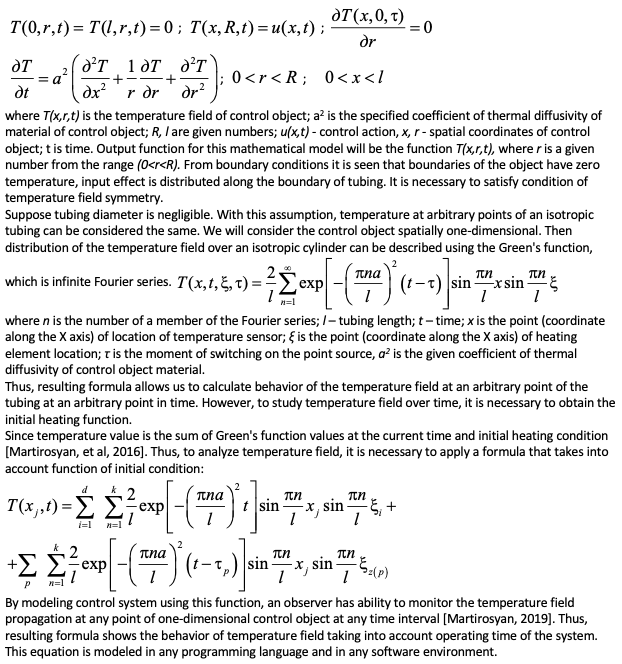
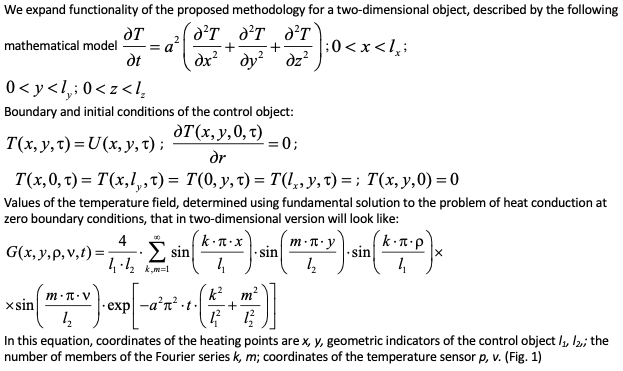
Figure 1
Object under consideration
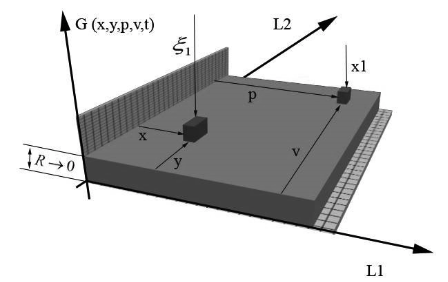
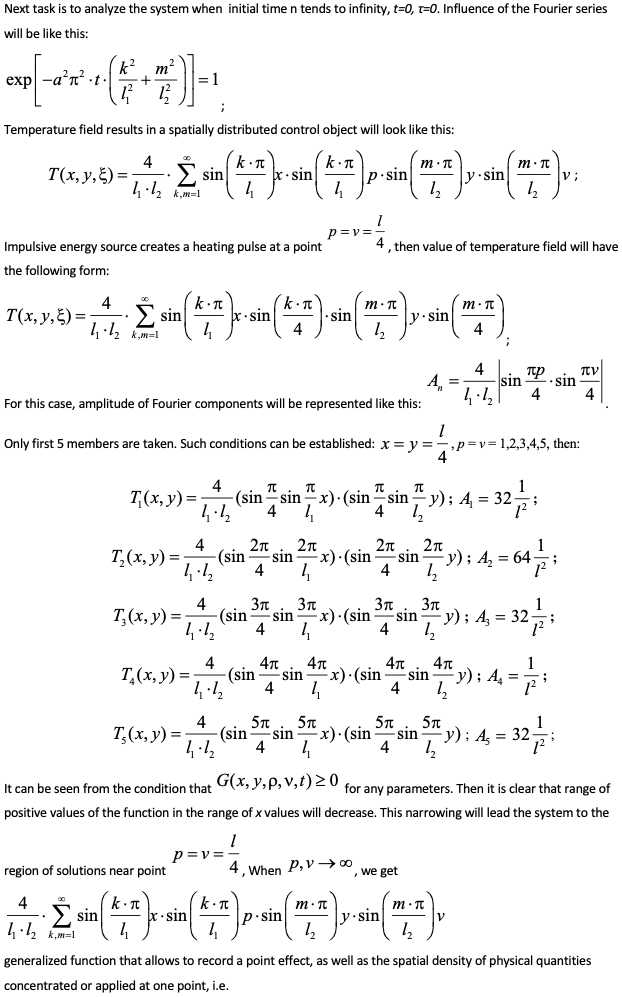
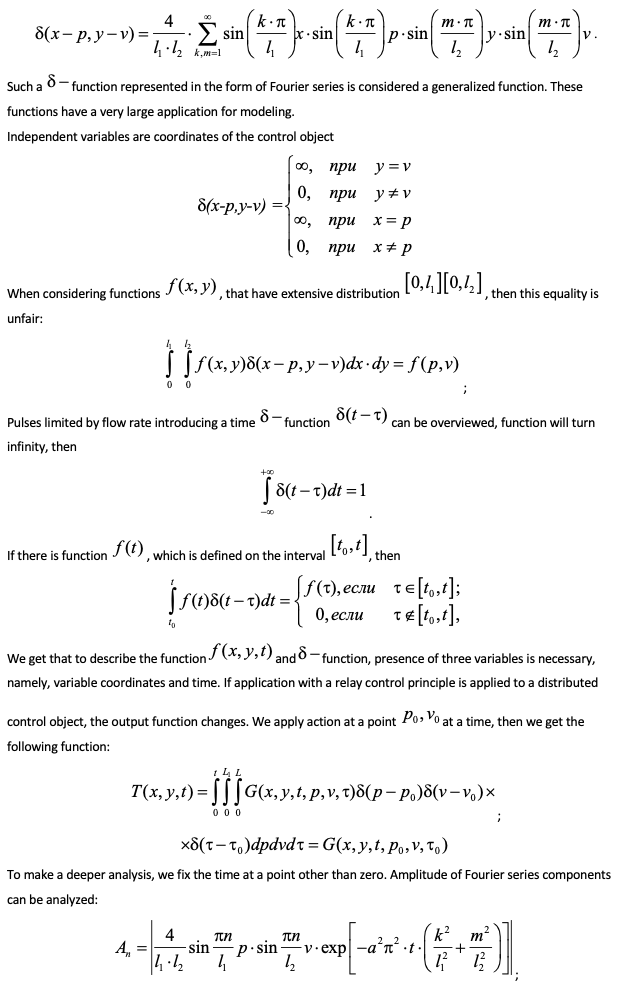
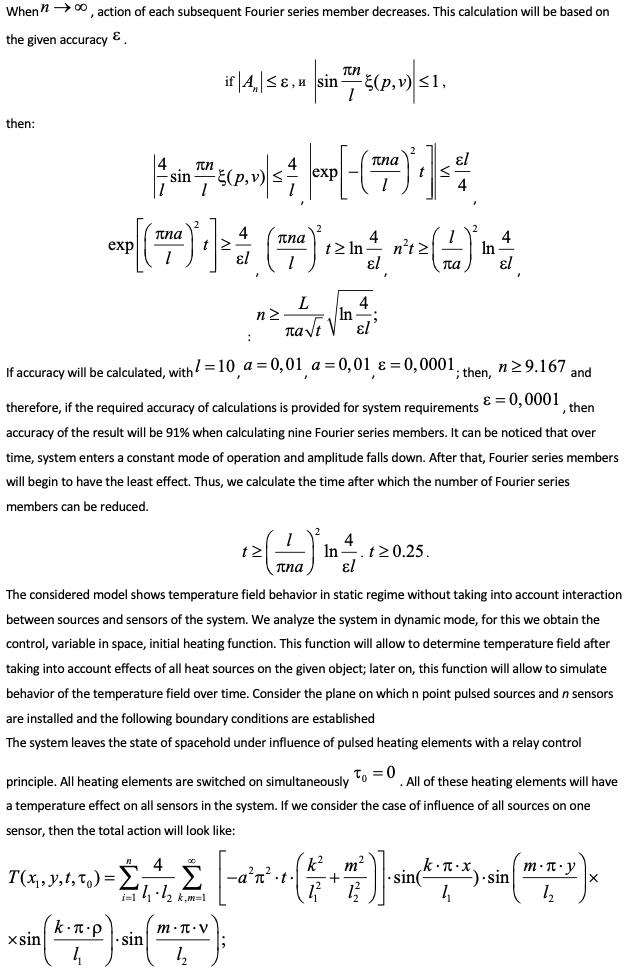
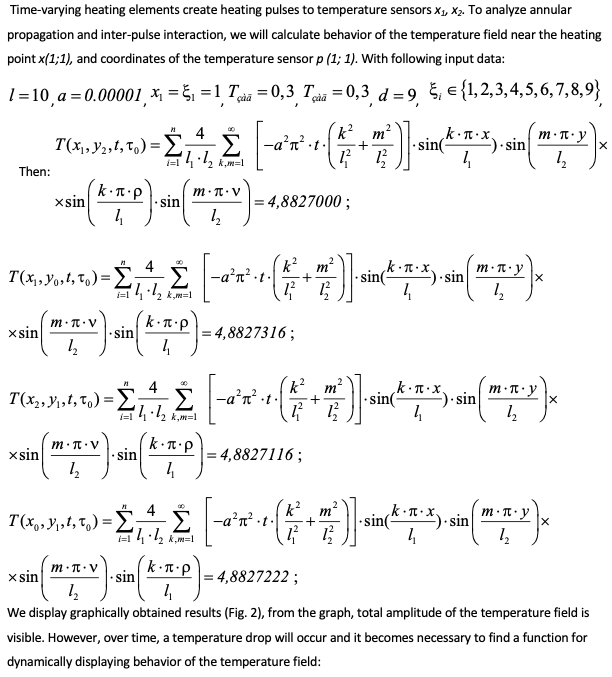
Figure 2
The first heating pulse
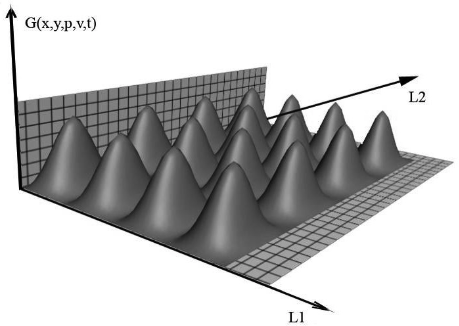
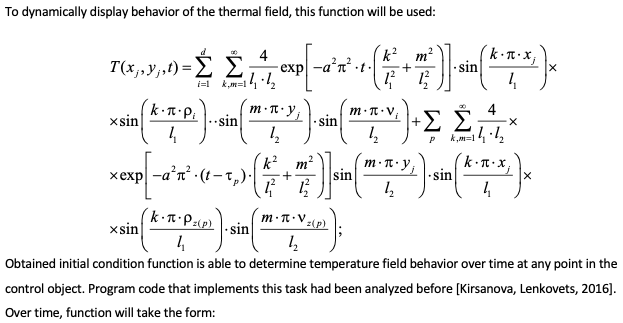
Figure 3
The system while
reaching a stable state
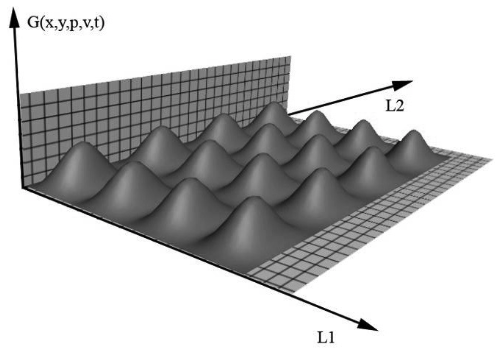
Further system will go to steady state condition. Established temperature regimes will create control actions only at those points of control object Tav = Tgiv , system reaches a stable state. Stable process:
Figure 4
System in stable condition
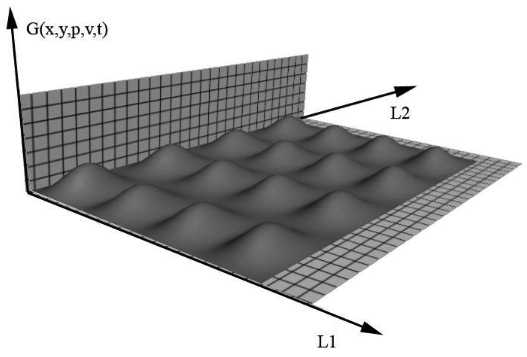
Thus, task of maintaining the temperature field was solved. The state of oil flow and its structure with this method of maintaining heat should be analyzed.
For the object of study, the following characteristics can be taken:

Figure 5
Dependence of mechanical resistance -∂Zont. / ∂t on
temperature of the oil sample of the Sobolinoye field
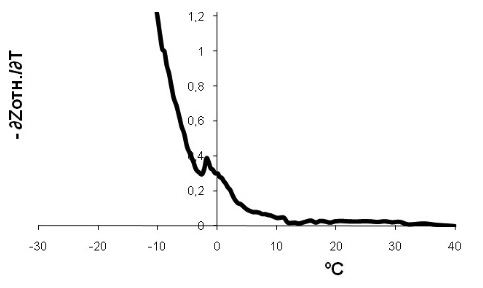
After adding heating elements, onset of paraffin crystallization is shifted to the low temperature zone by 7 0С, which confirms the effect of heating elements (Fig. 6).
Figure 6
Dependence of mechanical resistance Zrel (a) and ratio -∂Zrel / ∂t (b)
on temperature of the oil sample of the Sobolinoye field
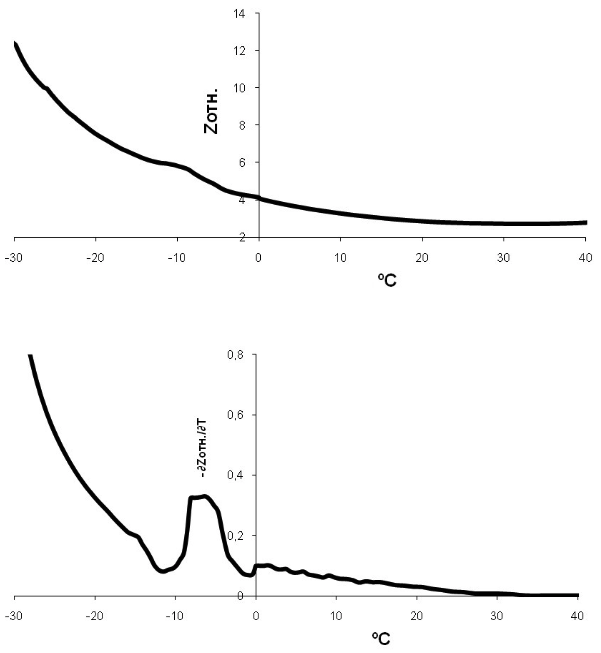
[Kukharova, et al, 2018]
Increase in the content of paraffins in oil disperse systems determines their onset of crystallization in positive temperature ranges. Consider a sample of oil from the Archinsky field with a paraffin content of 6.6%. Figure 7 shows the results of dependence of relative mechanical resistance on temperature.
Figure 7
Dependence of mechanical resistance Zrel. (a) and -∂Zrel. / ∂t (b)
on temperature of the oil sample of the Archinsky field [2]
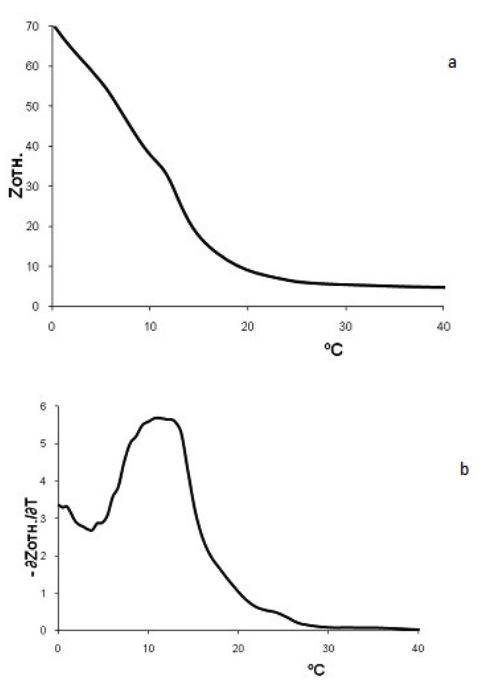
Oil-freezing point occurs at + 10 ºС, which creates significant problems when pumping and extracting deposits of this type of oil from the reservoirs.
The onset of paraffin crystallization in oil of the Archinsky field changes insignificantly, 2 0С colder than initial sample. However, in figure 6 b, the second maximum is clearly visible at T=2 0С. This can probably be explained by complex, two-phase crystallization mechanism.
As in the case of Sobolinoye oil deposit, dependencies presented for Archinskaya oil consist of two main linear sections. Moreover, a sharp increase in relative mechanical resistance of oil, which is significantly lower than that of the original sample, is seen.

Table 1
The beginning of oil crystallization
with addition of dopant
Sample Name |
Crystallization temperature, 0С |
Sable oil |
-2 |
With external heating |
-10 |
Archinskaya oil |
10 |
With external heating |
8 |
Source: compiled by Author considering
[2, Kukharova, et al, 2018]
Thus, developed methods show the real technical effect of implementation.
This paper proposes applied theory and methods for synthesis of distributed, non-linear control objects using example of process of high-paraffin oil extraction. Application of these methods depends not only on time, but also on spatial distribution of the object. In this connection, class of control actions is fundamentally expanding, primarily due to possibility of including in their number four-dimensional guidance described by functions of several variables - time and spatial coordinates.
All advantages of applying the approach make it possible to build control systems in which problems are solved comprehensively taking into account spatiotemporal controls occurring in object under consideration [Samigullin, et al, 2018]. Effectiveness of regulation is provided by dynamic characteristics and response of the system to external disturbances.
The main results of the work are:
• Procedure for stabilizing temperature field based on the Green's function is proposed. This technique consists in reaction of control system to the deviating value of temperature field caused by a pulsed source with a relay control principle. In connection with synthesis of a system with distributed parameters, synthesis of a control system differs from a linear spatial attachment to control object, spatial distribution of input actions and taking into account the spatial interaction of temperature fields [3-20].
• A new procedure for calculating the minimum number of heating elements to stabilize temperature field is proposed. This technique was modeled with a different number of heating elements. It gives the right to argue that proposed methodology solves the problem of temperature stabilization in the oil pipeline and in the screw.
• A software package has been developed; it allows to simulate behavior of a thermal field in an oil pipeline.
The studies presented in this paper are the final stage in development of a temperature field control system for production and transportation of high-paraffin oil.
About the state and use of mineral resources of the Russian Federation. (2015). URL: http://www.mnr.gov.ru/upload/iblock/5ef/2015_msr.pdf
Archinskoye oil and gas condensate field (NGKM). (2019). URL: https://neftegaz.ru/tech-library/mestorozhdeniya/142226-archinskoe-neftegazokondensatnoe-mestorozhdenie-ngkm/
Asadulagi, M.M., Pervukhin, D.A. (2018). Stochastic control system of hydrodynamic processes in aquifers. Innovation-Based Development of the Mineral Resources Sector: Challenges and Prospects - 11th conference of the Russian-German Raw Materials, 175-185
Cherepovitsyn, A.E., Ilinova, A.A. (2016). Ecological, economic and social issues of implementing carbon dioxide sequestration technologies in the oil and gas industry in Russia. Journal of Ecological Engineering, 17 (2), 19-23.
Cherepovitsyn, A.E., Kraslawski, A. (2016). Research into the innovative potential of an oil and gas company at different stages of field development. Zapiski Gornogo instituta, 222, 892-902. DOI 10.18454/PMI.2016.6.892
Dashko R.E., Kotiukov P.V. (2017). Analysis of construction accident in Saint-Petersburg based on consideration of underground space as a contaminated multicomponent system. 17th International multidisciplinary scientific Geoconference SGEM, 17, 51, 67-74.
Dashko, R.E., Lange, I.Y. (2017). Engineering-geological aspects of negative effects assotiated with contamination of disperse soils by oil products. International multidisciplinary scientific Geoconference surveying geology and mining ecology management, SGEM, 17(14), 617-625.
Ilyukhin, D.A., Pevnev, A.S., Ivanik, S.A. (2018). Justification of method of continuous measurements of position of sides of surface mine. International conference complex equipment of quality control laboratories: Institute of physics publishing, 1118, 1-6.
Ilyushin, Y.V., Novozhilov, I.M. (2017). Software implementation of a pulse regulator of a distributed distributed control object. Proceedings of 2017 IEEE 2nd International Conference on Control in Technical Systems, CTS 2017, ст. № 8109555, pp. 315-317. DOI: 10.1109/CTSYS.2017.8109555
Ivanova, L.V., Burov, E.A., Koshelev, V.N. (2011). Asphalt-resin-paraffin sediments in processes of production, transport and storage, Electronic scientific journal "Oil and Gas Business",1, 268-284. URL: https://russneft.ru/production/?id_company=19
Kirsanova, N. Y.,Lenkovets, O. M., Nikulina, A.Y. (2018). Renewable energy sources (RES) as a factor determining the social and economic development of the Arctic zone of the Russian Federation. 18th International Multidisciplinary Scientific GeoConference 18, 5.3, 679-686.
Kirsanova, N.Y., Lenkovets, O.M. (2016). Potential of monocities as a basis to implement the strategy of import substitution. 3rd International Multidisciplinary Scientific Conference on Social Sciences and Arts SGEM. Book 2 Vol. 3, 953-960
Kukharova, T.V., Pershin, I.M. (2018). Conditions of application of distributed systems synthesis methods to multidimensional object. International multi-conference on industrial Engineering and Modern Technologies (FarEastCon).Vladivostok: Far Eastern Federal University (FEFU), 1-5. DOI: 10.1109/FarEastCon.2018.8602749
Kukharova, T. V., Boev, I. V., Utkin, V. A. (2018). Observation and prediction systems modeling for human mental state. International multi-conference on industrial engineering and modern technologies (FarEastCon).Vladivostok: Far Eastern Federal University (FEFU), 1-5. DOI: 10.1109/FarEastCon.2018.8602831
Lenkovets O.M., Kirsanova N.Y. (2016). Role of innovations in the economic development of Russia. 3rd International Multidisciplinary Scientific Conference on Social Sciences and Arts SGEM Book 2 , 4, 559-564. DOI: 10.5593/SGEMSOCIAL2016/B24/S07.073
Martirosyan, A.V. (2019). Application of Fourier series in distributed control systems simulation / A.V. Martirosyan, K.V. Martirosyan, A.B. Chernyshev. IEEE Conference of Russian Young Researchers in Electrical and Electronic Engineering (EIConRus)– St.Petersburg, 609 – 613. DOI: 10.1109/EIConRus.2019.8656865
Martirosyan, A.V., Martirosyan K.V, Chernyshev A.B. (2016). Methods of distributed systems’ structured modeling. IEEE NW Russia Young Researchers in Electrical and Electronic Engineering Conference (February 2-3). St.Petersburg, 283–289. DOI: 10.1109/EIConRusNW.2016.7448175
Nikulin, A., Ikonnikov, D., Nikulina, A., Dolzhikov, I. (2018). OSH challenges for oil and gas companies in the Arctic Zone of the Russian Federation, Delta Fire protection & safety Scientific Journal, 12(2), 46-55
Novozhilov, I.M., Ilyushin, Y.V., Kivayev, I.N. (2018). Improving the quality of training specialists in subsoil use at the expense of introduction of automated training systems. Proceedings of 2017 IEEE 6th Forum Strategic Partnership of Universities and Enterprises of Hi-Tech Branches (Science. Education. Innovations), 125-127.
Pashkevich N.V., Golovina E.I., Tarabarinova T.A. (2018). Problems of reflecting information on subsoil assets in International Financial Reporting Standards. Academy of Strategic Management Journal, 17 (3), 1-9.
Samigullin, G., Schipachev, A., Samigullina, L. (2018). Control of physical and mechanical characteristics of steel by small punch test method. Journal of Physics: Conference Series, 10, 1, 677-681. DOI: 10.1088/1742-6596/1118/1/012038
Verzhbitskiy, K., Samigullin, G., Schipachev, A. (2018). Increasing service life of chuck unit of tank during cyclic loading. Journal of Physics: Conference Series, 1118, 1, 359-370. DOI: 10.1088/1742-6596/1118/1/012040
1. Associate professor, Department of System Analysis and Control, Saint-Petersburg Mining University, e-mail: Ilyushin_yuv@pers.spmi.ru
2. Associate professor, Department of Economics, Accounting and Finance, Saint-Petersburg Mining University, e-mail: Golovina_EI@pers.spmi.ru
[Index]
revistaespacios.com

This work is under a Creative Commons Attribution-
NonCommercial 4.0 International License